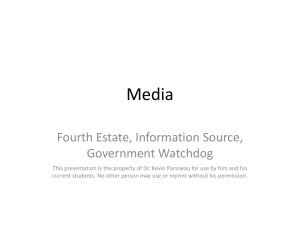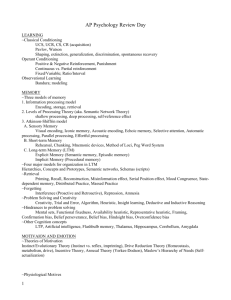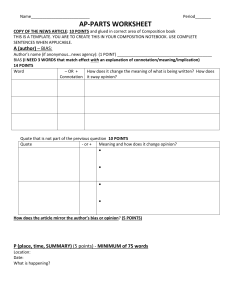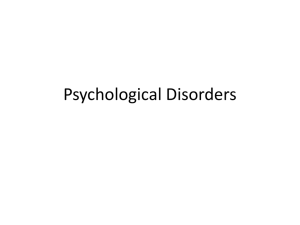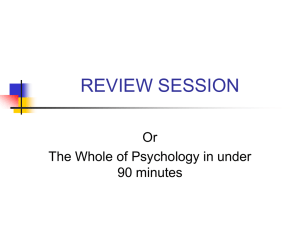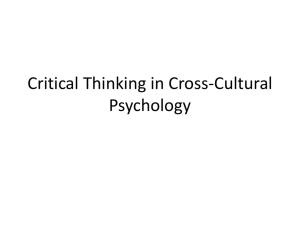Exam3_Review - HomePage Server for UT Psychology
advertisement
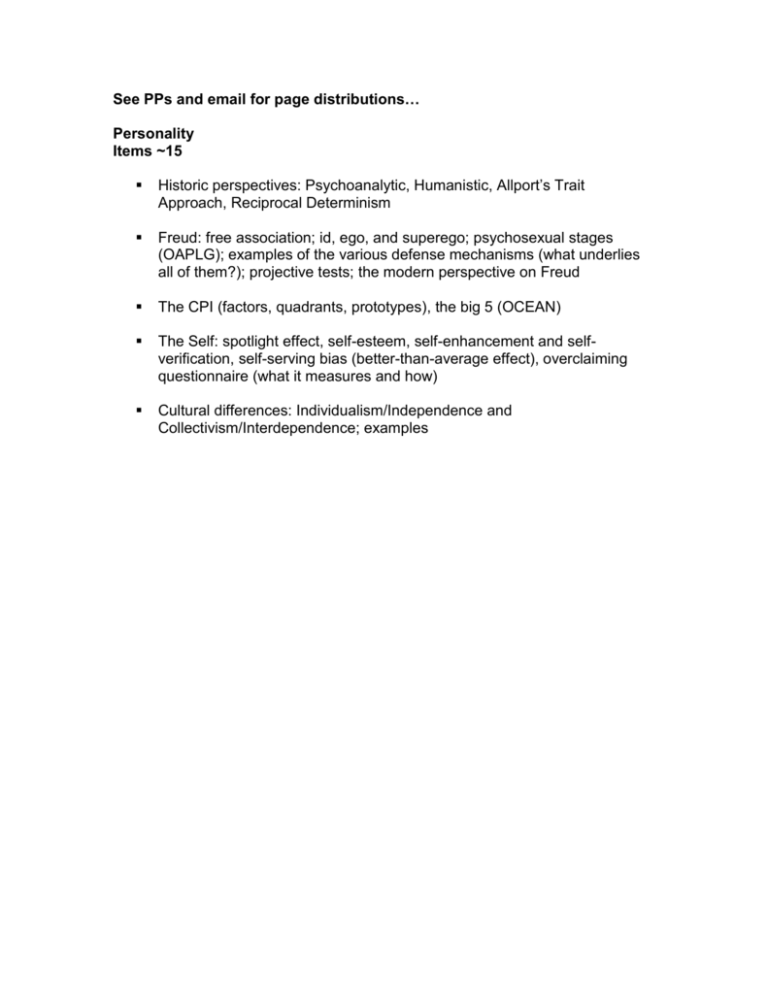
See PPs and email for page distributions… Personality Items ~15 Historic perspectives: Psychoanalytic, Humanistic, Allport’s Trait Approach, Reciprocal Determinism Freud: free association; id, ego, and superego; psychosexual stages (OAPLG); examples of the various defense mechanisms (what underlies all of them?); projective tests; the modern perspective on Freud The CPI (factors, quadrants, prototypes), the big 5 (OCEAN) The Self: spotlight effect, self-esteem, self-enhancement and selfverification, self-serving bias (better-than-average effect), overclaiming questionnaire (what it measures and how) Cultural differences: Individualism/Independence and Collectivism/Interdependence; examples Clinical Psychology Items ~20 Definition and classification of an “issue” as a “disorder”; the bio-psychosocial approach Anxiety disorders: GAD, PD, OCD, Phobias (how they can be explained and treated by applying learning theories like counter-conditioning—revisit your learning notes if you have lost touch with concepts like fear conditioning, reinforcement, stimulus generalization) DID (iatrogenic?) Personality disorders: anti-social PD/psychopathy and the film we saw in class—remember the Hare PCL and the findings from that video; other types of PDs (especially histrionic, narcissistic) Mood disorders: unipolar (mania or depression) or bipolar (cycles of mania and depression); depression (causes, social-cognitive perspective, symptoms, treatment) Schizophrenia: positive and negative symptom classification of disordered thinking, delusions, hallucinations, flat affect, inappropriate behavior, skewed reality; important types: paranoid and catatonic; causes and Rx Carl Roger’s client-centered therapy: active listening (therapist echoes, restates, clarifies), empathy, acceptance, self-actualization Beck’s cognitive therapy (replacing negative cognitions with positive ones, give patients greater sense of control) Is psychotherapy effective? (text) ECT: when is it used, effectiveness; what about psychosurgery? Pharmacotherapy: hand-out, see text for SSRIs and other mechanisms Social Psychology (including parts from Thinking and Memory) Items ~25 Memory: Weapons focus effect, cross-race identification bias, suggestibility and leading questions (adults and children); research by Loftus; Jennifer Thompson vs. Ron Cotton; the reasons for attorney guidelines Thinking: algorithms and heuristics; attribution theory; FAE (why are there cultural differences?) and actor-observer bias; availability heuristic; representativeness heuristic; base rate fallacy; overconfidence; confirmation bias; belief perseverance; effect of framing; effect of priming; self-fulfilling prophesy Attitude: what is it; what is cognitive inconsistency and what does it do; measurement of attitudes; cognitive dissonance; routes to persuasion (remember the films—e.g., Aronson’s conserve water when you shower study) Compliance: Cialdini and techniques Obedience: Milgram’s study Conformity: Asch’s study Role-playing: Zimbardo’s study Social facilitation and social loafing Group polarization and groupthink Prejudice: since we just talked about this, you ask me the questions… 3A’s Read the text on Aggression, Attraction, and Altruism closely Slides I missed yesterday… HOW ARE STEREOTYPES PERPETUATED? • Illusory Correlations E.g., Lawyers – Dishonest • Fundamental Attribution Error E.g., “She is lazy because she is black” • Sub-typing E.g., “She is not black! She’s Oprah!!” • Confirmation bias and self-fulfilling prophecies IS STEREOTYPING INEVITABLE? • Automatic/Default - Priming EGGS – BACON BLACK – AGGRESSIVE OLD – SLOW • Controlled/Effortful - Thought Suppression & Ironic Effects - Attention and motivation • Not noticing irrelevant differences - “Colorblindness”

